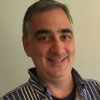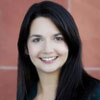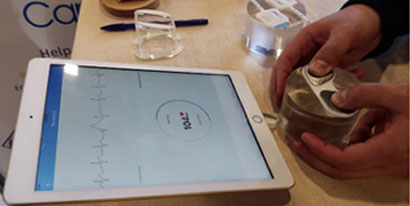PRG CEO Michael Keer recently moderated a panel of veteran hardware professionals who had attended CES 2019. Below are the insights that they shared.

Michael Keer
Product Realization Group
Founder and CEO
Moderator

David Crawley
Founder & CEO
Ubiquity Robotics

Mandi Mena
Head of Marketing
Fictiv

Greg Fisher
Co-founder & CEO
Hardware Massive / Berkeley Sourcing Group

Penelope Romand-Monnier
Associate & Club Director
Hardware Club
2019 Trends at CES
CES is such a huge event, it’s hard to see everything. And with the shiny new objects everywhere, it can be hard to get one’s arms around what’s trending. Nonetheless, each panelist observed areas of technology that were trending up, while others were trending down from past years.
Trending Up?
According to Greg, mobility was the big technology area trending up. Penelope was surprised to see a lot of B2B products. She was also watching many smart products in the home, particularly in the bathroom— think connected toilet. David observed an explosion of new sensor technology coming from the automotive industry, which was a huge participant at this year’s conference. Another major area for technology development was around screens. OLED technology is allowing screens to be placed in “new and weird places.” David also saw mobility as a major trend, commenting that drones had shifted from the consumer to very large– helicopter size. According to Mandi, 5G and AI were the buzzwords of the day, with a lot of confusion around the exact applications. Autonomous vehicles had a big presence. Every manufacturer had a vision for the autonomous vehicle, and it was interesting to see how they would fit in the consumer space.
Trending Down
Unlike the past, 3D printing, VR and traditional drones were nowhere to be seen. There’s still a lot of IoT, but as Greg commented, “we saw a lot of solutions looking for problems.” As moderator Michael Keer commented, “when I go to CES, I always wonder what I won’t see next year!”
Most Impactful Products
Mandi got really excited about some of the “in ear” products she saw this year. She described an invisible hearing aid from a company called “Eargo.” It has the potential to address a very large sector in the consumer market for those experiencing hearing loss.
Flexible displays had the biggest impact on David because of how we can change our thinking about industrial design and products. He noted we want to put displays on more and more things. “If we can make them flexible, we can probably make them inexpensively, so it’s going to affect cost, and the quality of those displays is really quite stunning.”


Penelope noted that she saw a lot of examples of formerly expensive medical grade technologies transitioning to home devices. David noted that in-home health monitors can be transformative to self-care from the consumer side, noting how he uses a heart monitor to manage A-Fib (atrial fibrillation, irregular heartbeat).
Greg’s nomination for the impactful product was the Sleep Number bed. The Sleep Number adjusted to your body when you turned to the side. Greg used to advise a company that did a similar mattress. As Greg commented, there are a lot of new sleep technologies that are telling if you’re asleep or not, but not a lot that are helping to improve your sleep. He thinks that combination should be impactful.

And the Award for Wackiest Product …
Singing Robots.

Connected houses for birds, with sensors for food, water and light. Our panelis noted, “when you are an entrepreneur you are very passionate about your product, but I don’t think very many consumers are interested in a connected house for birds.”
TV Jock Strap. A band you can place at the bottom of your television screen to block out the sports score ticker.
At Home Cheese Maker. It makes great cheese, but as our panelist commented, “why would I want to make cheese at home?”
Effective Strategies For CES
CES is huge. CES is chaos. CES is the event for consumer electronics, year after year. So our panelists recommend that you plan ahead to get the most out of your CES experience.
Greg described 4 things that you can generally get out of conferences: thought leadership, brand awareness, deal flow and strategic partnerships. According to him your strategy at CES needs to focus on just 1 or more of these, which will drive your activities. Nonetheless, he still describes CES as the “definition of chaos” with a million things to see. His tips:
- Know where you’re going to focus
- Don’t spend time on travel
- Know who you want to meet and plan
As Penelope explained, there are different ways to attend CES, from just walking the floor and scheduling meetings at night, to doing the full blown booth at Eureka Park.
- Know why you want to go
- How much time you have
- How many people can you bring
- How much money you want to spend
Once you have a goal, you can figure out the best way for you and your company to attend.
As David explained, Eureka Park can be very cost effective for a startup in its first two years, as the cost for a regular booth is only $1k. He recommends a light-weight set up that focuses on the product. For his company’s booth they had their two robots, a vinyl roll-up backdrop to cover the back of the booth, and a couple of side stands. To control cash outlay, they rented a big house 40 minutes outside of Vegas for their whole team for $100 a night. David and his team also had a strategy for splitting their time between the booth and floor, working with buddies.
According to Mandi, they see a lot of customers at CES. They send their executive team and do a couple of extra hours events: one after hours press event and one customer appreciation event. Mandi described their activities as light weight, but there was still a lot of pre-planning. They identified which customers were launching new products so they could check in with them. They set up a lot of business development meetings ahead of time. As a team, they dispersed and didn’t attend all the same events.
Getting Highest Value from CES
For someone who is willing to put some money into the show, Mandi recommends participating in a press events that occur before CES starts. They cost about $8k, but can be a great equalizer because everyone is on a tabletop.
- Pre CES Press Event
- 200-300 participants
- 3-4 hour Event
- Access to 1500 press
Penelope also advises that you reach out to media between September and December and try to build the relationships ahead of CES. They may not be willing to set up meetings with you but you can plant the seed in their minds. What were your most valuable activities outside of CES?
After-parties are a good source for connections. The Hardware Massive and Fictiv parties were popular events!
Mandi reminded folks not to forget the breakfast events like analyst events. She pointed out that the analyst firms often do free industry round-up breakfasts, which are good for learning about an industry and meeting people.
What Are Your Recommendations For Those That Want To Attend In 2020?
A common theme among the panelists is to plan your follow-up. You need know what you’re going to do with all those business cards you collect. Greg devised a great system with a hole punch to code the cards so that their marketing person could get the information into their CRM system hit the ground running. Mandi used an app called “CC Card” to scan her cards and the notes she made. Follow-up planning is just as important as logistics planning.
Advance preparation is another recommendation. Have all the cables, scissors, tapes and pens you will need because you won’t be able to get them at CES.
Part of advance preparation is booking early. According to David, the earlier you book, the better position you can negotiate for yourself on the show floor.


